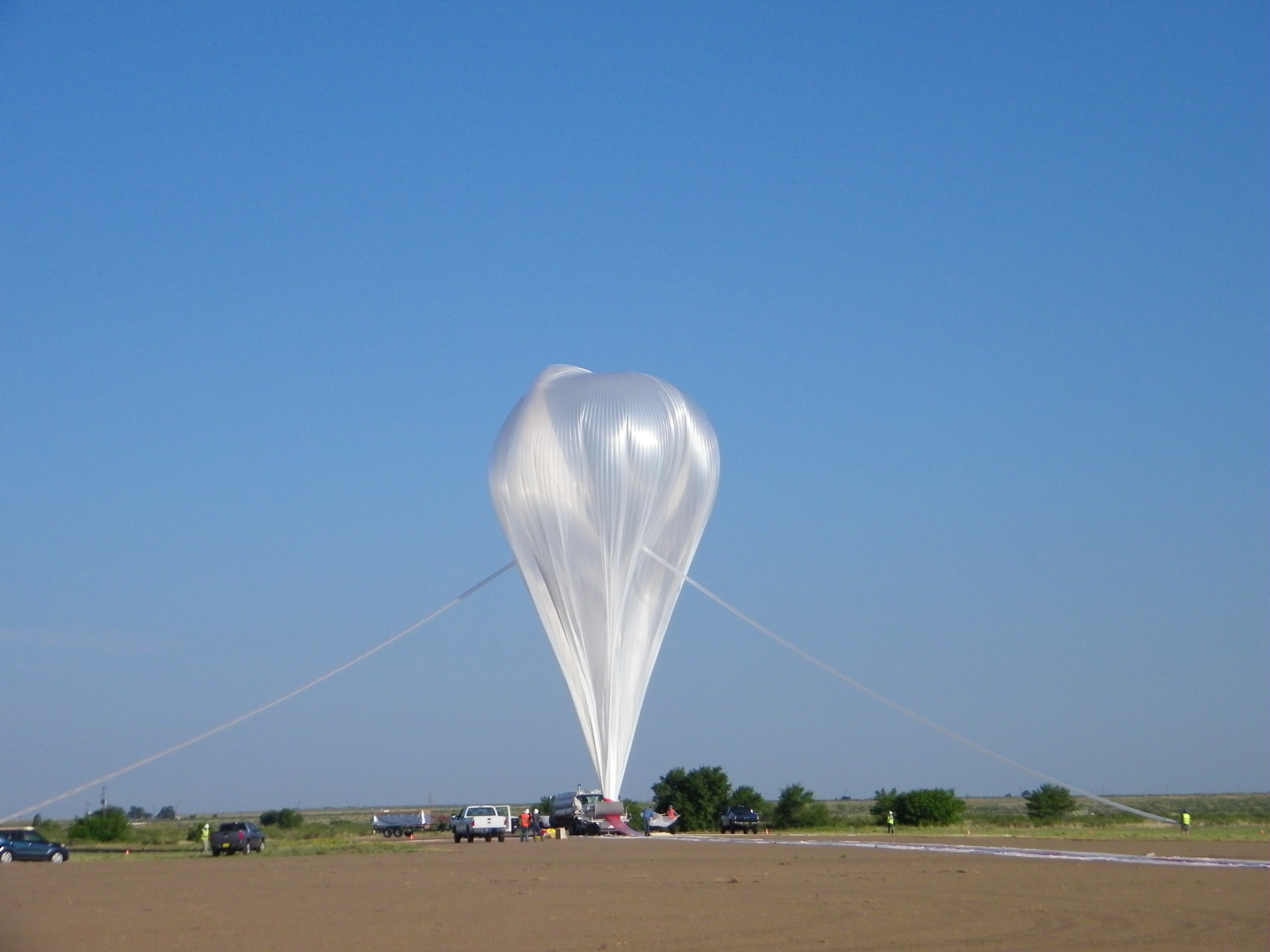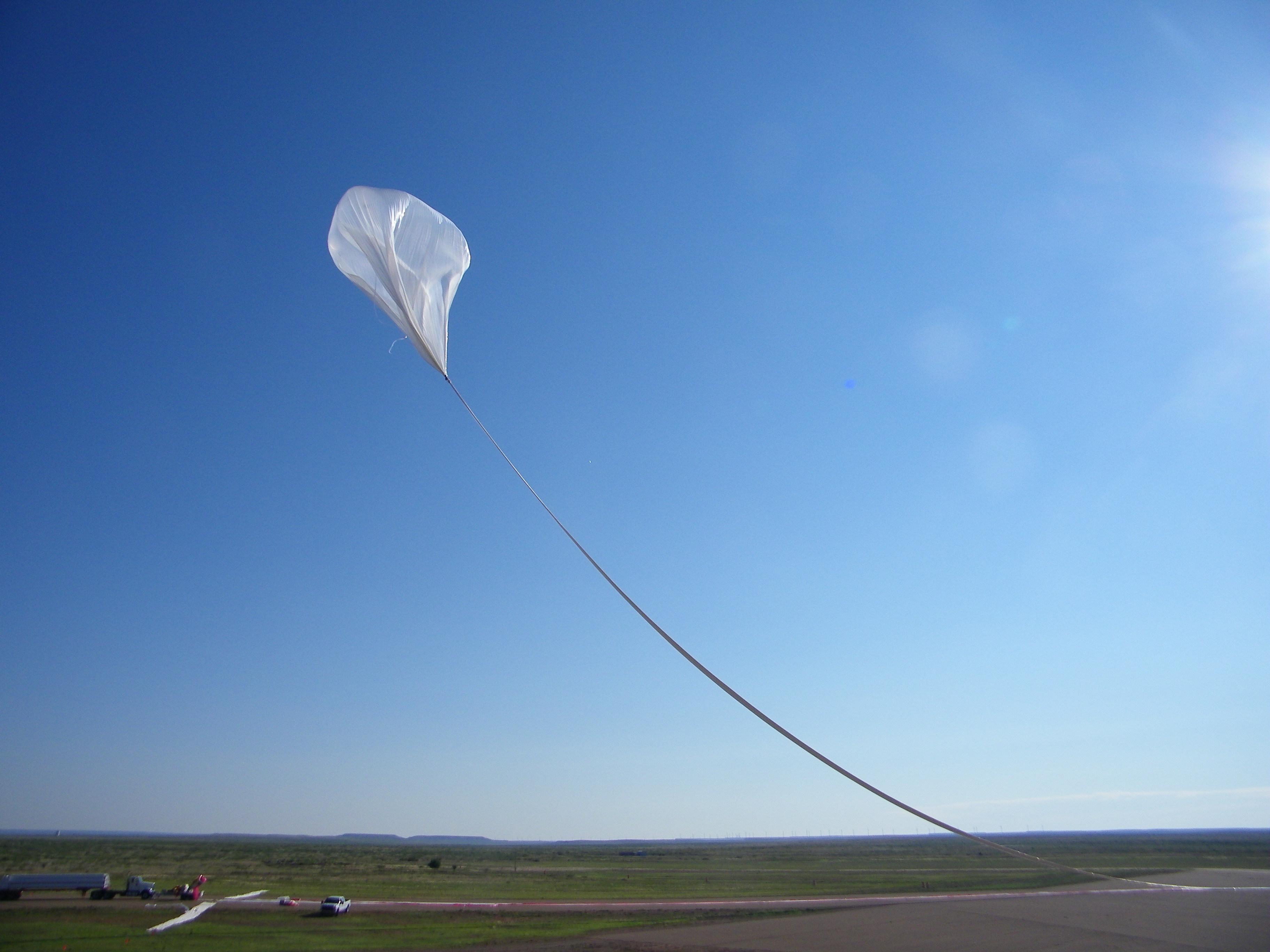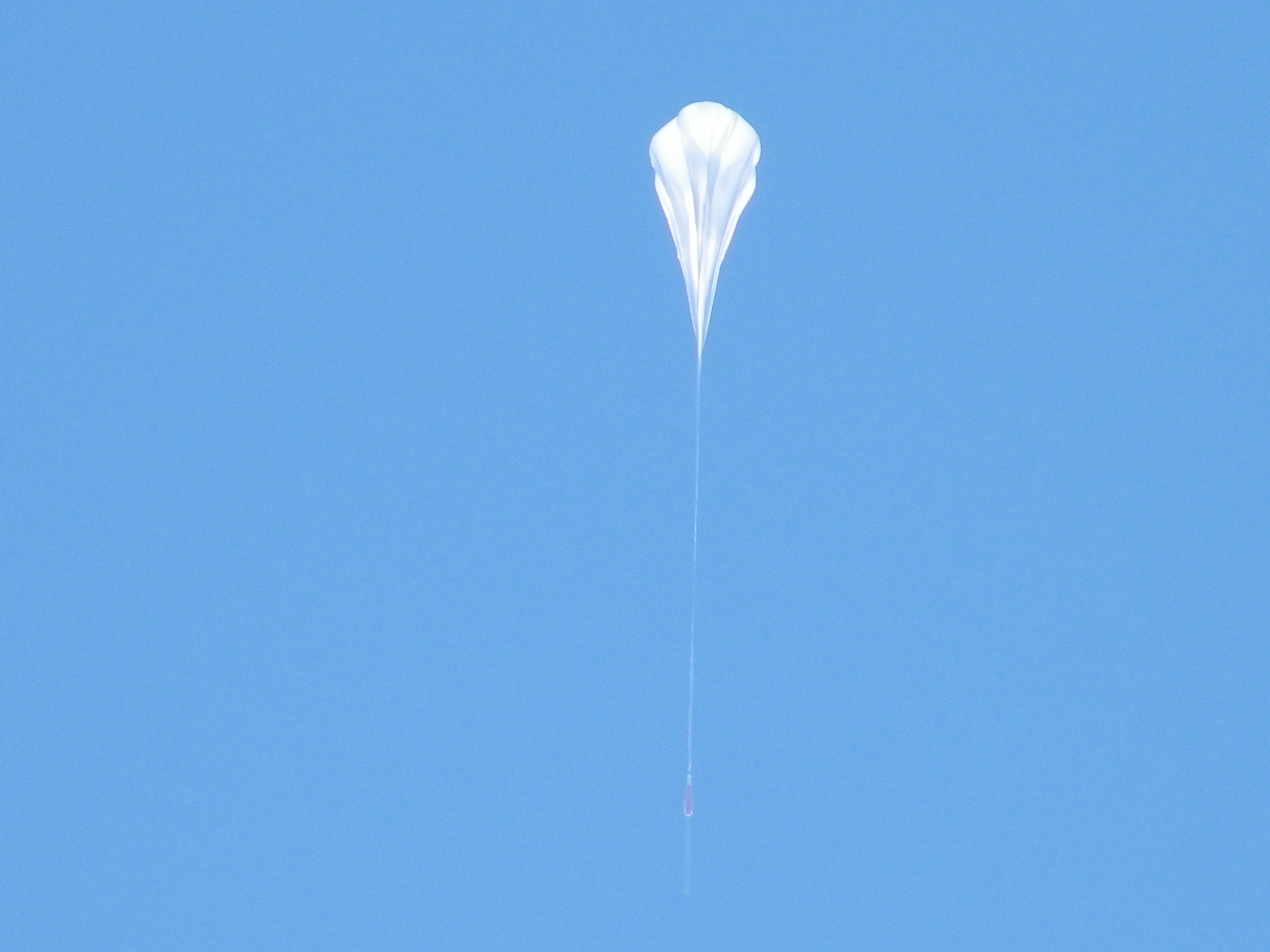This Giant, Ultrathin NASA Balloon Just Broke an Altitude Record

NASA's gigantic, ultrathin balloon, known as the "Big 60," broke a record for highest balloon altitude maintained during flight when it took to the skies last month.
The space agency released the football-stadium-size, 60-million-cubic-foot (1.7 million cubic meters) scientific balloon from Fort Sumner, New Mexico, on Aug. 17 and Aug. 25, according to a NASA statement published Aug. 31.
NASA officials said the Big 60 set a new sustainable-altitude record by reaching 159,000 feet (48,500 m) during an 8-hour flight on Aug. 17, traveling into Earth's stratosphere and ascending about 5 miles (8 km) higher than the next-largest balloon prototype. [You 'Knead' to See Garlic Bread Fly into the Stratosphere, Then Get Eaten! (Video)]

As "NASA's largest zero pressure balloon to date," officials said, Big 60 was capable of such a feat because of its enormous size and delicate skin.
"If all of the polyethylene material were spread out on the ground, it would be enough to cover about 20 acres [8 hectares] of land," space agency officials said in the statement.
In addition to its size, the Big 60's thin film, or balloon skin, supported the accomplishment by withstanding temperatures as low as minus 130 degrees Fahrenheit (minus 90 degrees Celsius) — though Earth's stratosphere is, on average, much warmer, at minus 76 degrees F, or minus 60 degrees C, officials said. They described the film as a "little less than the thickness of kitchen plastic wrap.''

The temperature-resistant film endured three rounds of testing at Wallops Flight Facility Balloon Research and Development Lab in Virginia during production.
Get the Space.com Newsletter
Breaking space news, the latest updates on rocket launches, skywatching events and more!
Future tests will help researchers discern which science missions and new instruments would benefit from hitching a ride on the Big 60. Sarah Fischer, a technologist at the Wallops Balloon Research and Development Lab, said in the statement that the Big 60 can potentially lift a payload as heavy as a small four-wheeler.
But the Big 60 did carry its own experiments, officials said: Two student payloads in NASA's Undergraduate Student Instrument Project and a larger, interplanetary cubesat-antenna experiment from the University of Arizona ascended on the Aug. 17 flight, floating for 8 hours.
Follow Doris Elin Salazar on Twitter@salazar_elin. Follow us @Spacedotcom, Facebook and Google+. Original article on Space.com.
Join our Space Forums to keep talking space on the latest missions, night sky and more! And if you have a news tip, correction or comment, let us know at: community@space.com.

Doris is a science journalist and Space.com contributor. She received a B.A. in Sociology and Communications at Fordham University in New York City. Her first work was published in collaboration with London Mining Network, where her love of science writing was born. Her passion for astronomy started as a kid when she helped her sister build a model solar system in the Bronx. She got her first shot at astronomy writing as a Space.com editorial intern and continues to write about all things cosmic for the website. Doris has also written about microscopic plant life for Scientific American’s website and about whale calls for their print magazine. She has also written about ancient humans for Inverse, with stories ranging from how to recreate Pompeii’s cuisine to how to map the Polynesian expansion through genomics. She currently shares her home with two rabbits. Follow her on twitter at @salazar_elin.









